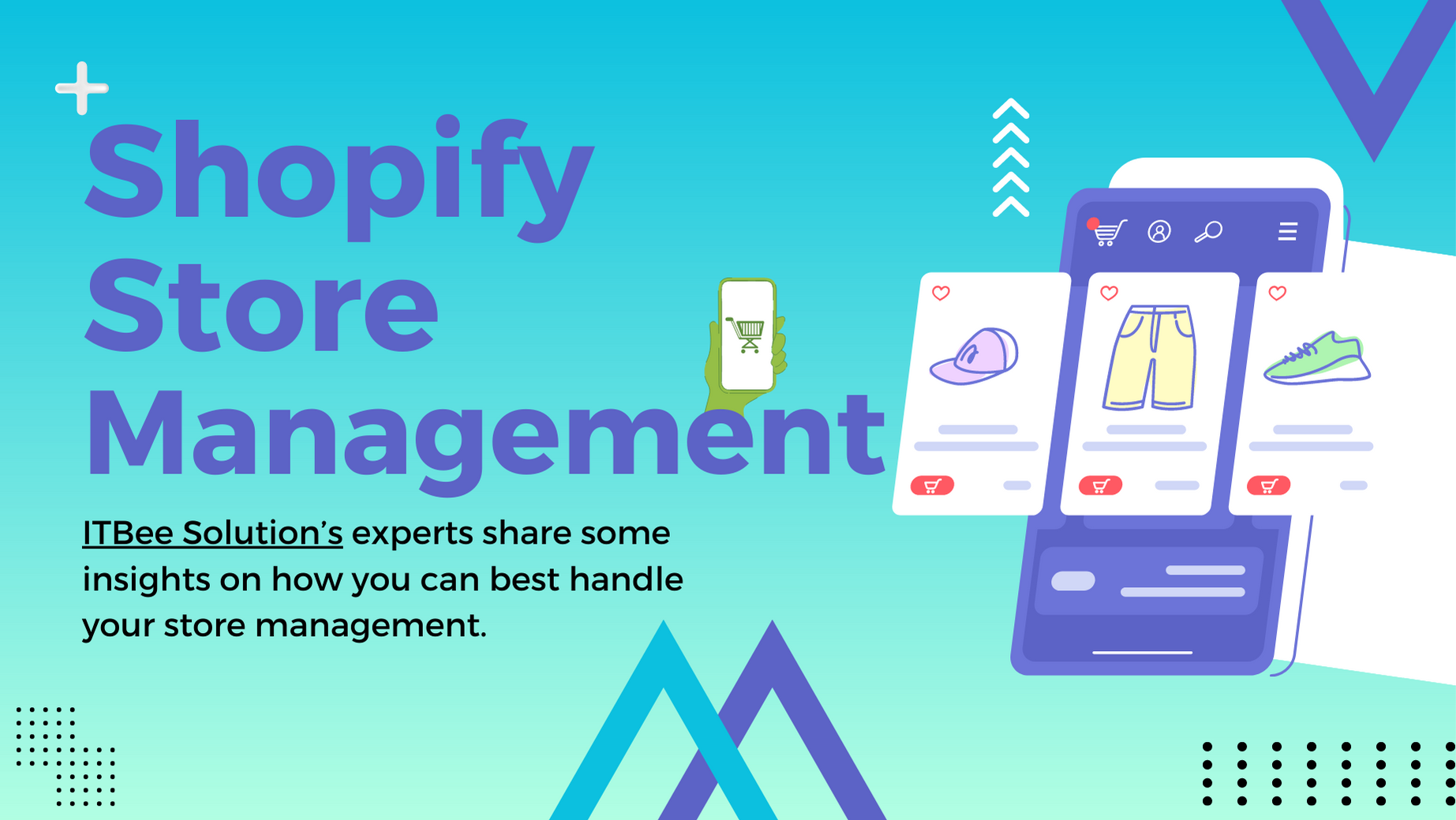- August 16, 2023
- admin
- 0

E-Commerce Solution: A Complete Guide to Shopify Store Management
As online e-commerce platforms are reinvented as experiencing locations, the entire planet is quickly turning into a storefront.
With e-commerce booming globally, platforms like Shopify have become immensely popular for both budding and established entrepreneurs. For merchants that want their e-commerce businesses to be of high quality, efficiency, simplicity, and feature richness, Shopify is the platform of choice. The ecosystem of the Shopify platform is used by developers to help merchants with the design and development of their online stores. The first step in providing demonstrations, test themes, or apps to clients is to set up a Shopify development store. For various clients, a Shopify Partner may construct an infinite number of development stores.
ITBee Solution’s experts share some insights on how you can best handle your store management. The developer store is a free Shopify account that can be accessed from the Partner Dashboard. It has no time restrictions, enables you to handle an unlimited number of transactions, and has features comparable to those of the Advanced Shopify plan. However, you cannot: until you upgrade to a paid account:
- Install premium applications (except from a few Partner-friendly applications)
- More than ten private applications
In order to guarantee that the client will receive a recurring income share, the Shopify developer must create a development store for the customer. Visit the Shopify website for more details about budget sharing and the potential earnings from joining the Shopify Partner programme.
If you’re a developer or an agency working with clients, you might have heard about Shopify development stores, a vital feature to streamline the design and setup process. Let’s delve into a comprehensive understanding of Shopify development stores.
How Can a Development Store Be Built?
Here is a detailed setup guide:
- In the Shopify Partner Dashboard, select Stores.
- Click the Add store button once you’re on the Stores page.
- Select Development store from the Store type drop-down menu in the Add store section.
- When finished, select Save.
- You may now use the Stores tab in Partner Dashboard to log into your newly generated development shop once it has been built.
How Can You Improve Your Shopify Development Store's Functionality?
Numerous apps in the Shopify App Store provide extensive features and plugins to enhance the functioning of Shopify stores. Partner-Friendly Apps are accessible to all Shopify Partners and are free to download from development shops. Paid apps become billable as you change your development store to a paid account.
To ensure flawless operation, a Shopify developer must test the apps in a development store before integrating them into the client’s actual Shopify store.
How Does an App Development Store Work?
- In the Shopify App Store, click the necessary app.
- Select “Add app” from the menu.
- By inputting your store address, you may verify the app.
- Start using the app after confirming installation.
How Can Ownership of a Shopify Development Store Be Transferred?
Now is the moment to give your client control of the development store you just constructed. Here are the steps you need to take to change the ownership of a business:
- Click Stores from the Partner Dashboard.
- Select Transfer ownership next to the store you want to move.
- Choose the new owner’s name from the list in the dialogue box for transferring store ownership.
- Before continuing, you should choose Add a staff account to create a new customer account if you haven’t already added your client as a staff member.
- When finished, select the Transfer store. A message with instructions on setting up an account and choosing a plan will be sent to the new store owner through email. Until your client approves the transfer, the store will remain in pause mode.
A collaborator account will automatically be created after the client upgrades to the Shopify paid plan, via which you will begin receiving your monthly recurring revenue split.
How Can I Request Access to a Shopify Development Store?
A Shopify development store’s main function is to attract new customers, but what if your client already has a development store? In that situation, before you can begin working, you must request access to that account.
As a developer, you have access to your client’s development store through a collaborator account. Utilizing your Partner Dashboard, submit a request for a collaborator account to the store owner.
Assume a developer receives permission from the store owner to activate a staff account or already has one for the client’s store. In that instance, the shop owner will be prompted to modify the developer’s current account permissions in response to the developer’s request for a collaborator account.
Here are the steps you need to take to ask to enter the client’s store:
- From your Partner Dashboard, click Stores.
- Simply select Add store.
- Choose Managed store under Store type.
- Type the store’s URL in.
- You can either check Full access in the Permissions section or select the sections you want to access.
- In the Add a message section, you may also leave the store owner a message.
- Once finished, select Save.
Archived/Unarchived Stores on Shopify Development
The development stores that you are no longer utilizing can be archived. If you decide to use an archived store later, you can unarchive it through the Partner Dashboard.
Conclusion: Get Your Shopify Development Store Up and Running
Without the limitations of a 14-day free trial period, development stores provide the ideal testing environment for developers to create the web stores for their clients. They also serve as the main source of income for the developers in the form of a monthly recurring revenue split. You may set up your development environment using Shopify development stores without compromising your primary storefront.
Or you may hire professionals from ITBee Solution to give you the best Shopify Store Management Service.

